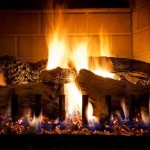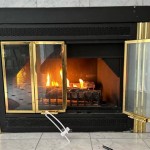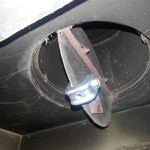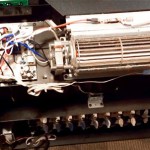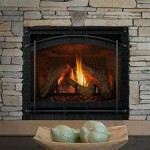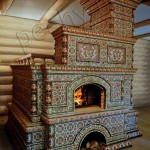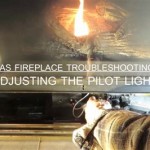Top Rated Gas Fireplace Inserts: A Comprehensive Guide
Gas fireplace inserts represent a significant upgrade for homeowners looking to enhance the warmth, efficiency, and aesthetics of their existing masonry or prefabricated fireplaces. These inserts offer a cleaner, more convenient, and often more cost-effective alternative to traditional wood-burning fireplaces. Selecting the right gas fireplace insert, however, requires careful consideration of various factors, including heating capacity, efficiency ratings, venting requirements, aesthetic preferences, and budget. This article explores the top-rated gas fireplace inserts currently available, providing detailed information to aid in the decision-making process.
Understanding Gas Fireplace Insert Types
Gas fireplace inserts are broadly classified into two primary types: direct vent and vent-free. Each type possesses distinct characteristics that impact installation requirements, venting options, and overall performance. Direct vent inserts are considered the safer and more efficient option, while vent-free inserts offer greater flexibility in terms of installation location.
Direct vent inserts draw combustion air from outside the home and exhaust combustion byproducts directly outdoors through a dedicated vent system. This sealed combustion process prevents indoor air quality issues by minimizing the risk of carbon monoxide exposure. Direct vent systems typically use a coaxial vent pipe, where one pipe draws in fresh air and the other exhausts combustion gases. The sealed nature of direct vent units also contributes to their higher efficiency ratings, as they do not rely on indoor air for combustion.
Vent-free inserts, also known as ventless inserts, do not require an external venting system. They burn room air and release combustion byproducts directly into the living space. Vent-free inserts are equipped with oxygen depletion sensors (ODS) that shut off the gas supply if the oxygen level in the room drops to an unsafe level. While vent-free inserts offer the advantage of easy installation and cost savings associated with eliminating venting, they are subject to stricter safety regulations and may not be permitted in all jurisdictions due to concerns about indoor air quality. Furthermore, vent-free inserts typically have lower efficiency ratings compared to direct vent models.
Key Features to Consider When Selecting a Gas Fireplace Insert
Several key features should be carefully evaluated when choosing a gas fireplace insert. These features directly impact the insert's heating performance, energy efficiency, aesthetic appeal, and overall usability.
Heating Capacity (BTU): The heating capacity of a gas fireplace insert is measured in British Thermal Units (BTU). The appropriate BTU rating depends on the size of the room or area to be heated. Generally, a higher BTU rating indicates greater heating power. However, selecting an insert with an excessively high BTU rating for a small space can lead to overheating and discomfort. It is crucial to calculate the square footage of the area to be heated and consult with a qualified professional to determine the optimal BTU rating for the specific application.
Efficiency Rating (AFUE): The Annual Fuel Utilization Efficiency (AFUE) rating indicates the percentage of fuel that is converted into usable heat. A higher AFUE rating signifies greater energy efficiency and lower operating costs. Direct vent inserts typically have higher AFUE ratings than vent-free models. Homeowners seeking to maximize energy savings should prioritize inserts with high AFUE ratings. It's important to note that laboratory AFUE ratings may differ slightly from actual performance in a home setting due to factors such as insulation, window efficiency, and weather conditions.
Venting Requirements: Venting requirements vary significantly depending on the type of gas fireplace insert. Direct vent inserts require a complete venting system, which can be installed through an existing chimney or through an exterior wall. The venting system must be compatible with the specific insert model and installed according to manufacturer specifications and local building codes. Vent-free inserts, while eliminating the need for external venting, require adequate ventilation in the room to ensure proper air circulation and prevent the buildup of combustion byproducts. Homeowners considering vent-free inserts should carefully review local regulations and consult with a qualified professional to assess the suitability of their home for this type of insert.
Aesthetic Design: Gas fireplace inserts are available in a wide range of aesthetic designs to complement various home decor styles. Options include traditional log sets, contemporary glass media, and realistic flame patterns. The insert's firebox interior can be customized with options such as brick panels, ceramic glass, and accent lighting. The exterior surround, or fascia, can also be selected to match the existing fireplace facade and overall room design. Homeowners should consider their personal preferences and the architectural style of their home when choosing an insert with an appealing aesthetic design.
Remote Control and Smart Home Integration: Many modern gas fireplace inserts are equipped with remote controls that allow users to adjust the flame height, heat output, and blower speed from a distance. Some inserts also offer smart home integration capabilities, allowing users to control the fireplace using a smartphone or voice assistant. These features provide added convenience and flexibility, enhancing the overall user experience.
Top Rated Gas Fireplace Insert Models
The market offers a variety of gas fireplace inserts, each with unique features and benefits. The following are examples of highly-rated models, categorized by type and key features.
Direct Vent Gas Fireplace Inserts:
Several direct vent models consistently rank high among homeowners and industry professionals. These inserts prioritize efficiency, safety, and aesthetic appeal.
* Brand A Model X: Known for its high AFUE rating, this insert features a realistic log set and adjustable flame height. It offers a powerful blower for enhanced heat distribution and is compatible with various venting options. Its remote control allows for convenient temperature adjustments and timer settings.
* Brand B Model Y: This model excels in contemporary design, featuring a sleek glass media bed and a minimalist surround. Its multi-sided glass viewing area provides a panoramic view of the flames. It boasts a self-modulating burner that automatically adjusts the flame height based on the room temperature, maximizing energy efficiency and comfort.
* Brand C Model Z: A mid-range option that balances performance and affordability, this insert incorporates ceramic glass that radiates heat effectively. Its durable construction ensures long-lasting performance. It is designed for easy installation and maintenance, making it a popular choice for homeowners who prefer a straightforward operating experience.
Vent-Free Gas Fireplace Inserts:
Vent-free inserts offer installation flexibility, though it's crucial to verify local code compliance and assess ventilation requirements. The following represent vent-free options frequently cited for their performance and safety features:
* Brand D Model P: This insert combines a realistic log set with advanced safety features, including an enhanced oxygen depletion sensor (ODS) and a carbon monoxide detector with automatic shut-off. Its compact design makes it suitable for smaller fireplaces. It features a variable heat output, allowing users to customize the temperature based on their individual needs.
* Brand E Model Q: Known for its ease of installation, this model includes a built-in thermostat for maintaining a consistent room temperature. Its simple controls and user-friendly design make it a convenient option for homeowners who prioritize ease of use. It is available in various finishes to complement different decor styles.
* Brand F Model R: This model offers a contemporary design with realistic flickering flames, even without a vent. It's often selected for spaces where a traditional fireplace isn't feasible. It boasts an efficient heating system with multiple heat settings, allowing users to adjust the temperature to their preferences.
Installation and Maintenance Considerations
Proper installation and regular maintenance are essential for ensuring the safe and efficient operation of a gas fireplace insert. Installation should be performed by a qualified professional who is familiar with local building codes and manufacturer specifications. Regular maintenance, including cleaning the burner and venting system, can help prevent malfunctions and extend the lifespan of the insert.
Installation: Direct vent inserts require careful installation of the venting system to ensure proper combustion and exhaust. The vent pipe must be properly sized and installed to prevent backdrafting and carbon monoxide leaks. Vent-free inserts, while requiring minimal installation, still require careful attention to ventilation requirements and proper connection to the gas supply. A qualified technician should perform a gas leak test after installation to ensure the safety of the system.
Maintenance: Regular maintenance tasks include cleaning the burner, inspecting the venting system, and checking the gas connections for leaks. The burner should be cleaned annually to remove any debris that could obstruct the gas flow and affect the flame pattern. The venting system should be inspected for blockages and corrosion. The gas connections should be checked for leaks using a soap and water solution. Homeowners should consult the manufacturer's instructions for specific maintenance recommendations and schedules.
Safety: Gas fireplace inserts require careful adherence to safety guidelines. Homeowners should ensure that carbon monoxide detectors are installed and functioning properly in the vicinity of the fireplace. They should also avoid storing flammable materials near the fireplace. It is crucial to educate all household members about the safe operation of the fireplace and the potential hazards associated with improper use. Any unusual odors or malfunctions should be promptly reported to a qualified technician.

Best Gas Fireplace Inserts Fireplaces Direct Learning Center

Best Gas Fireplace Inserts Fireplaces Direct Learning Center
.aspx?strip=all)
Top 11 Gas Fireplace Insert Trends Of 2024

How To Buy A Gas Fireplace Insert Buyer S Guide From Regency

The Best Gas Fireplaces Of 2024 Direct Learning Center

Gas Fireplace Inserts Pros And Cons Of Ventless Fireplaces

Gas Burning Fireplace Inserts Sierra Hearth And Home

Best Gas Fireplace Insert Top 5 For Existing Fireplaces

Duluth Forge Dual Fuel Ventless Gasfireplace Insert 26 000 Btu T Stat Control Fdf300t Com

Best Fireplace Inserts In 2024
Related Posts

